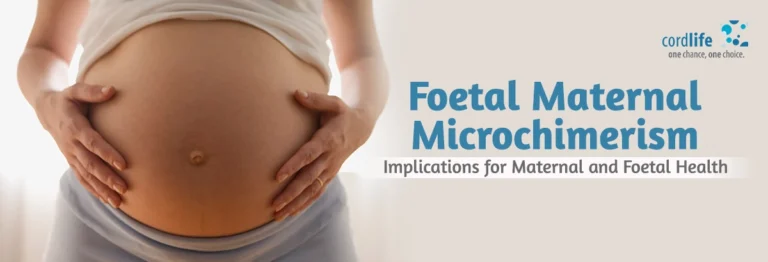Microchimerism is a small population of cells that arise from fetal microchimerism (FMc) and maternal microchimerism (MMc). While fetal microchimerism is the presence and persistence of fetal cells in maternal tissues, maternal microchimerism (MMc) is the presence of maternal cells in fetal tissues.
Maternal fetal microchimerism
Fetal stem cells can migrate across the placenta to enter the mother’s bone marrow. Embryonic progenitor stem cell transfer begins 4 or 5 days immediately after fertilization and goes along with all stages of pregnancy.
Microchimerism of this kind occurs in both male and female embryos. However, due to the presence of Y chromosomes in females, it is easy to detect male microchimerism in maternal tissue.
Fetal microchimerism is found in cellular subsets of the pregnant mother’s peripheral blood, including cells of the lymphoid and myeloid lineages. An experiment was conducted to assess microchimerism where 40% had maternal microchimerism compared to 15% who had fetal microchimerism.
Fetal DNA in maternal plasma
For further evaluation of fetal DNA in maternal plasma and urine samples. 80 pregnant women were studied during 7u and 40u week of pregnancy. Their DNA was amplified using nested polymerase chain reactions for Y-chromosome DNA. According to fetal sex analysis after delivery, 25 women carried females and 55 males. 96% of plasma samples and 38% of urine samples from 55 women carrying male fetuses had Y-specific signals. Increasing gestational age increases the specificity and sensitivity of Y-PCR.
Theoretically, there is an abundance of fetal microchimerism that depends on several factors such as:
- immunogenetic relationships between mother and fetus and
- pre-existing residents of the maternal system, from her mother or her previous children
Autoimmune Effects on the Mother
Studies have been conducted to determine whether microchimerism is associated with autoimmune diseases that predominantly affect women. Autoimmune thyroid disease affects women of reproductive age. Fetal cells are present in the maternal peripheral blood for a very long time and have clinical similarities with graft-versus-host disease and autoimmune disease leading to autoimmune diseases.
Fetal microchimerism occurs in healthy women
The incidence of fetal microchimerism in healthy women may not be known, but studies have found reports of autoimmune disease ranging widely from 8% to 72%. In animal studies, fetal microchimerism may have been observed to be frequent and always present. Even one report of male presumptive embryonic cells is found in bone marrow, and bones are mostly found in women after reproduction.
Factors influencing maternal development in fetal microchimerism
The factors that influenced the development of fetal microchimerism have been much debated. But the main factors affecting fetal microchimerism include:
- Abnormality of the placenta
- Fetal aneuploidy (presence of one or more extra or absent chromosomes)
- Preeclampsia and
- loss or termination of pregnancy
- Genetic and environmental factors are also likely to contribute to microchimerism
Fetal microchimeric cells help repair maternal tissues
In recent years. Microchimeric fetal cells have been found to respond to maternal tissue injury. Injured tissues produce signals to move embryonic stem cells from the pregnancy reservoir and further stimulate transplanted stem cells into specialized stem cells. In addition, chronic tissue injury may promote the initiation of microchimerism
Maternal Microchimerism in Pregnancy
Maternal microchimerism is a two-way process, in which there is transfer of maternal cells into the fetal circulation. This idea was conceived in 1960, when a famous researcher found maternal leukocytes in the umbilical cord. Having said that during early fetal life and in the early life of a newborn. maternal microchimeric cells were found in various organs, including the thymus, skin, liver, spleen, and thyroid. Maternal microchimerism and a few more T cells produce cytokines that can affect the development of the fetus in the possible autoimmune disease.
